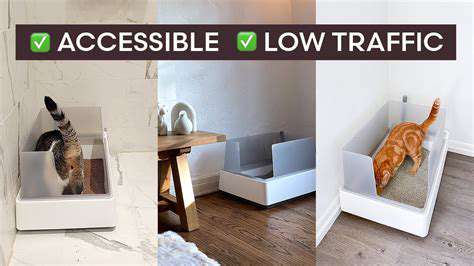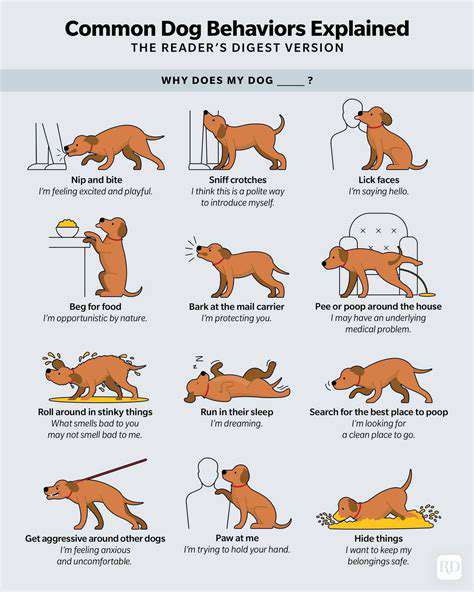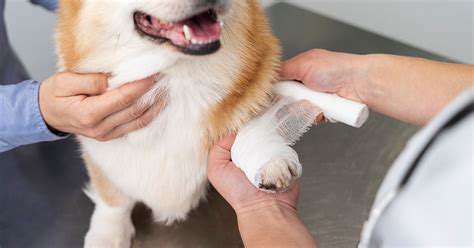How to Teach Your Cat to Use a Litter Box (Troubleshooting)

Litter Box Placement
Strategic placement of the litter box is crucial for a happy and healthy cat. Cats are creatures of habit and often prefer a consistent location for their bathroom needs. Avoid placing the litter box in high-traffic areas, such as near food and water bowls or the main entryway. A quiet, easily accessible, and private spot is ideal. Consider the cat's natural inclinations and give them a space that feels secure and comfortable.
Ideally, provide multiple litter boxes, especially if you have multiple cats. This reduces the likelihood of litter box disputes and ensures each cat has a dedicated space. The general rule of thumb is one more box than the number of cats in the household. This will help prevent unpleasant accidents and create a harmonious environment.
Litter Box Design Considerations
The size and shape of the litter box significantly impact a cat's comfort and willingness to use it. A box that's too small will feel confining and make the cat reluctant to relieve themselves. Choose a box that allows your cat to comfortably turn around and bury their waste without feeling cramped. Consider the cat's size and breed when selecting the appropriate dimensions. A larger box is often preferred, especially for larger breeds or multiple cats. This will help prevent territorial disputes.
Litter box materials can also affect the experience. Some cats prefer a solid, non-porous litter box, while others prefer a litter box with a slightly textured surface. Consider the material and shape of the box when selecting a litter box design. Ensure the box is easy to clean and maintain to prevent odors and keep the area sanitary.
Litter Box Maintenance
Regular cleaning and maintenance of the litter box are essential for a hygienic environment. Emptying the box regularly and thoroughly cleaning the entire box and surrounding area will prevent unpleasant odors and attract unwanted insects. This is crucial for maintaining a healthy and comfortable living environment for your feline friend. Daily scooping of solid waste is important to keep the litter box fresh and clean.
Choosing the right type of litter also plays a role in litter box maintenance. Some litters are more absorbent than others, which can affect how often you need to scoop and clean. Consider the type of litter that best suits your cat's needs and your cleaning schedule. Always make sure the litter is clean and free of clumps or debris.
Litter Box Training and Hygiene: Maintaining a Clean and Appealing Environment
Choosing the Right Litter Box
Selecting the appropriate litter box is crucial for successful litter box training and overall feline hygiene. Consider the size and breed of your cat, as well as the space available in your home. A spacious litter box, large enough for your cat to comfortably turn around in, is essential for their comfort and will encourage them to use it. A litter box that is too small can lead to behavioral issues, such as inappropriate urination and defecation outside the box. Consider a covered litter box if you have concerns about odor or if you have multiple cats, as this can help to minimize the spread of odors throughout your home and promote a more comfortable environment for your feline companions.
Different types of litter boxes are available, including traditional open boxes, enclosed boxes, and self-cleaning litter boxes. Each type has its advantages and disadvantages. Open boxes are generally more affordable, but they can be more prone to tracking litter outside the box. Enclosed boxes are better for containing odors, but some cats may find them less appealing. Self-cleaning litter boxes can save you time and effort, but they can be more expensive.
Litter Type and Frequency of Replacement
The type of litter you choose can significantly impact your cat's comfort and your home's cleanliness. Consider using clumping litter, as it's easier to scoop and helps contain odors. Avoid using scented litter, as it can be irritating to your cat's sensitive nose and potentially cause respiratory issues. The frequency of litter box scooping and complete litter box replacement is also very important. Scooping daily and completely replacing the litter every 1-2 weeks will maintain the cleanliness and hygiene of the litter box and is key to maintaining a pleasant environment for your cat.
The amount of litter to fill the box is also a consideration. Overfilling the box can make it uncomfortable for your cat to use, while underfilling the box may not provide adequate coverage and increase the likelihood of tracking litter outside the box. Following recommendations on the packaging of the litter you have selected should offer a good guide.
Maintaining a Clean Litter Box Environment
Regular cleaning is essential for maintaining a healthy and appealing litter box environment. Scoop out solid waste daily to remove odor-causing substances and encourage your cat to use the box. Completely cleaning the litter box thoroughly, including washing the box itself, at least once a week is crucial for preventing buildup of bacteria and odors. This will help maintain a clean and appealing litter box, preventing your cat from seeking alternative, undesirable, bathroom areas.
Addressing and Preventing Issues
Litter box issues are sometimes unavoidable, but they are often preventable. Changes in your cat's litter box habits could indicate a medical condition, such as urinary tract infections, or a behavioral issue. If you notice a change in your cat's bathroom habits or if you have any concerns about your cat's health, immediately consult a veterinarian. Regular veterinary checkups are important for maintaining your cat's overall health, including addressing any underlying medical conditions that could be causing litter box issues. Providing a clean and comfortable litter box environment is a proactive measure that can help address behavioral issues and prevent potential health complications.
A muscle strain, commonly referred to as a pulled muscle, occurs when muscle fibers are overstretched or torn. These injuries can vary in severity, from mild strains that cause slight discomfort to severe strains that can result in significant pain and loss of function. Common causes include sudden movements, heavy lifting, or overexertion during physical activities.
Medical Causes and Veterinary Intervention: When to Seek Professional Help
Underlying Medical Conditions
Many seemingly minor issues in a pet's behavior or physical condition can stem from underlying medical problems. These issues can range from simple infections to more serious conditions, such as kidney disease or diabetes. Early detection and intervention are crucial for improving the pet's quality of life and preventing the progression of these conditions. Regular veterinary check-ups are essential for identifying potential problems before they become severe and impact the pet's overall health and well-being.
Infections and Parasites
Infections, whether bacterial, viral, or fungal, can manifest in a variety of ways, from skin issues and lethargy to digestive problems and respiratory distress. Parasites, such as fleas, ticks, and internal worms, can also cause significant health problems, leading to anemia, discomfort, and even organ damage. Prompt veterinary attention is essential for effective treatment and preventing the spread of infections or infestations to other pets in the household.
Proper identification of the infection or parasite is key to choosing the right treatment. This often involves physical examination, lab tests, and sometimes advanced diagnostic imaging. A veterinarian can provide the best course of action to eliminate the parasites or infection and ensure the pet's recovery.
Trauma and Injuries
Accidents, falls, fights with other animals, or even seemingly minor bumps and bruises can lead to serious injuries. These injuries can range from lacerations and fractures to internal bleeding and head trauma. Immediate veterinary attention is crucial to assess the extent of the injury, provide appropriate treatment, and prevent long-term complications. Delayed treatment can exacerbate the problem and have long-term consequences for the pet's health.
Allergies and Food Sensitivities
Pets, just like humans, can develop allergies to various substances, including food, environmental allergens, and medications. These allergies can manifest as skin irritation, itching, digestive upset, and even respiratory issues. Identifying the specific allergen is crucial for effective management of the condition. A veterinarian can help determine the cause of the allergy and recommend appropriate treatment strategies, such as hypoallergenic diets or medications.
Behavioral Changes and Neurological Issues
Sudden changes in a pet's behavior, such as aggression, anxiety, or lethargy, can be indicative of underlying neurological issues or other medical problems. These changes can be subtle or dramatic, and it's important to note any behavioral shifts alongside physical symptoms, like tremors or seizures. Seeking veterinary advice is crucial to rule out potential neurological disorders or other medical conditions that may be causing the behavioral changes.
Endocrine Disorders
Endocrine disorders, such as hypothyroidism or hyperthyroidism, can affect various bodily functions and cause a range of health issues. These conditions often require specialized veterinary care and management. Early diagnosis is essential to minimize the impact of these conditions. Veterinary intervention often involves hormone replacement therapy or other treatments tailored to the specific endocrine disorder. Regular monitoring and adjustments to treatment may be necessary to ensure optimal health outcomes.
Read more about How to Teach Your Cat to Use a Litter Box (Troubleshooting)
Hot Recommendations
- Top Dog Treats That Are Healthy
- Feeding Your Small Animal: Safe Foods
- How to Teach Your Dog to Play Fetch
- Heartwarming Stories of Pets in Retirement Homes
- How to Teach Your Dog to Leave It
- My Pet's First Snow Experience [Story]
- Review: [Specific Brand] Pet Water Fountain
- Guide to Dealing with Aggression in Dogs
- Guide to Using Positive Reinforcement in Training
- Living with a Pet Who Loves the Outdoors










